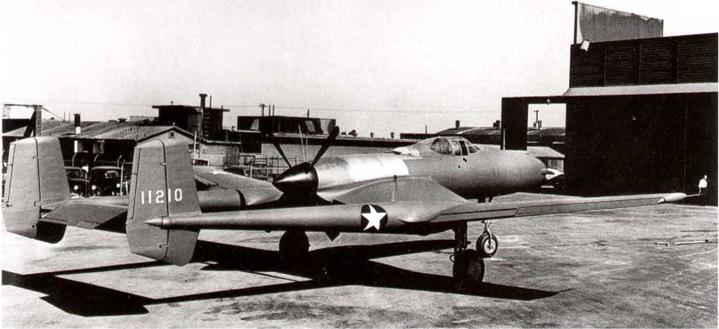The Struggle for Air Superiority in Europe,. North Africa, China, and the Pacific
The USAAF faced an uphill struggle world-wide at the beginning of 1943 to gain air superiority. Heavily engaged in Europe, North Africa, and the Pacific, air superiority had not been gained in any of these theaters of operation. Perhaps the closest to this was in North Africa as a result of Operation “Torch”, but the fight against the Luftwaffe was very tough, even with the aid of the Royal Air Force in the Mediterranean area. In Europe, the 8th Air Force had seen much of its strength sent to North Africa and it was just beginning to rebuild. In the Pacific, the various Air Forces were fighting back at the Japanese, but losses continued to be heavy.
However, 1943 was to see a gradual build up to air superiority in all of the combat theaters. In Europe, the AAF was to see its cherished doctrine of day bombing brought almost to a halt by intense Luftwaffe opposition, but grim determination and the development of the long-range escort fighter began to rebuild the impetus, ready for the great air battles of 1944. The Axis forces lost the war in North Africa and the Allies invaded Europe from the south. The Pacific Air Forces grew to a major support of the long battle to dislodge the Japanese from the island chains leading to Japan. The fight of the anti-submarine aircraft in the Atlantic and the Caribbean gradually overcame the deadly anti-shipping menace of the U-boats, breaking their back in 1943.
During 1943, the USAAF continued its massive growth, so much that it more than doubled its strength between June 1942 and June 1943, to more than 49,000 aircraft. However, its losses in action against Germany and over the Pacific also jumped, to more than 3,000 in Europe and the Mediterranean and some 800 versus Japan. These losses reflect both the decision to concentrate on defeating Germany and the large role played in the Pacific by the US Navy.
The intensive development of suitable camouflage, markings and colors for aircraft of the USAAF and its allies continued in 1943, only to culminate in the major decision that camouflage was not necessary at all for most types of combat aircraft! This decision was arrived at tentatively in mid-1943, and put into full effect by the end of the year, causing the biggest change in the USAAF’s aircraft appearance during the war. Ever-growing strength of the AAF led to entirely new types of combat aircraft distinctive markings (see Chapter 6), especially in Europe (the Allies had agreed to defeat Germany before turning their full strength on Japan).
During 1943, the results of world-wide combat experience led to the following major changes in the marking and camouflaging of USAAF aircraft:
Northwest African Air Forces adopt local theater camouflage, March.
Value of camouflage questioned by Gen, Arnold, March.
Dark Olive Drab No. 41 replaced by a new shade, March, effective September.
Markings for walkways and “No Step” markings added, June. Anti-submarine white camouflage finally adopted, June,
T. O. 07-1-1 issued in full-color printing, June.
Star insignia has white bars and a red outline added, June.
Ail trainers to be painted aluminum, or be natural metal finish, June. National insignia outline color changed to insignia blue, September.
Names and numbers of Army-Navy aircraft camouflage colors standardized in ANA Bulletin No, 157, September,
Camouflage no longer required for almost all USAAF aircraft, except night fighters, September.
High Gloss black paint developed for night use, November. Standard aircraft gloss colors for aircraft issued as ANA Bulletin No. 166, December.
|
Spec. No. |
Jan. Feb. |
Mar. Apr. |
May June |
Jul. Aug. |
Sep. Oct. |
Nov. Dec. |
|
T. O. 07-1-1 Markings, |
A | |
New Color Version — |
A В III |
C | |
D | |
Major Revision I |
|
Camouflage |
||||||
|
Bulletin 41 Colors for Camouflage Finishes |
Superseded b^ANA157 |
|||||
|
September 28. |
||||||
|
Bulletin 48 Colors for |
||||||
|
Camouflage Finishes |
||||||
|
A-N Porcelain Color Plates |
Superseded J^NA |
|||||
|
іШЗес.4 |
||||||
|
Spec. 3-1 Color Card |
A x |
Superseded by ANA |
||||
|
" 57 & 166 |
||||||
|
24102 National |
Superseded by AN-I-9 |
Canceled May 21 |
||||
|
Insignia |
||||||
|
24105 Markings for Airplanes |
2 3 | | |
К 1 |
||||
|
24113 Color for Army Air Forces Airplanes (issue B) |
B_ I |
Changed Bronze Пгррп fn |
||||
|
Dull Dark Green |
||||||
|
24114 Camouflage Finishes for Aircraft |
||||||
|
ANA 157 Aircraft Camouflage Color Standards |
Issued September 28 1 |
|||||
|
ANA 166 Aircraft Color Standards (Glossy) |
Issued Decembe^^ |
|||||
|
AN-I-9 Insignia: National Star |
Issued 1 March 1 |
a і |
b | |
|||
|
___________ |
US Army Air Forces specifications in use, revised, or issued, by date and version, during 1943. The letters indicate a letter revision of a spec., such as T. O. 07-1-1 A. The numbers indicate an amendment to an earlier version of a spec., such as Amendment No. 6 to Spec. 24114.
|
![]() * *
* *











